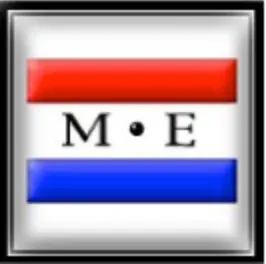Under the EEOC discrimination laws, a plaintiff must show, through either direct or indirect evidence, that the discrimination complained of was intentional. E.E.O.C. v. Horizon/CMS Healthcare Corp., 220 F.3d 1184, 1191 (10th Cir. 2000), citing Shorter v. ICG Holdings, Inc., 188 F.3d 1204, 1207 (10th Cir. 1999) (Title VII discrimination).
Pretext is Essential to Prove Intentional Discrimination Pretext is necessary to prove intentional discrimination in federal discriminatory statutory claims. Without sufficient evidence of pretext, your lawsuit likely will be dismissed on a motion for summary judgment and will never be heard by a jury. Discrimination or retaliation can be proven by direct or indirect evidence.
What is pretext?
In lay terms, pretext means a sham or false reason that an employer provides to terminate or take an adverse action against an employee. In cases where the employer has taken action against an employee on pretextual grounds, an attorney will be able to assist you in determining whether the sham or false reason from the employer for its actions taken is unlawful and actionable. “Pretext can be shown by such weaknesses, implausibilities, inconsistencies, incoherencies, or contradictions in the employer’s proffered legitimate reasons for its action that a reasonable factfinder could rationally find them unworthy of credence and hence infer that the employer did not act for the asserted non-discriminatory reasons.” Hardy v. S.F. Phosphates Ltd. Co., 185 F.3d 1076, 1080 (10th Cir. 1999). Pretext may include, among other things, evidence of prior treatment of plaintiff, disturbing procedural irregularities and use of subjective criteria. Simms v. Okla. ex rel Dept. of Mental Health, 165 F.3d 1321, 1328 (10th Cir. 1999).
The plaintiff's ultimate burden of persuading the trier of fact that he or she was the victim of intentional discrimination merges with the plaintiff's burden of proving that the employer's reason is pretextual. Texas Dept. of Community Affairs v. Burdine, 450 U.S. 248, 256 (1981). This may be accomplished "either directly by persuading the court that a discriminatory reason more likely motivated the employer or indirectly by showing that the employer's proffered explanation is unworthy of credence." Id., emphasis added.
Direct Evidence
An example of direct evidence would be words or a statement by the employee’s supervisor where the discriminatory intent is evident on its face (e.g., “we don’t employ women like you here” or “we let you go because you’re too old to be part of the team”). “Direct evidence is ‘[e]vidence, which if believed, proves [the] existence of a fact in issue without inference or presumption.” Shorter v. ICG Holdings, LLC, 188 F.3d 1204, 1207 (10 th Cir. 1999). “Direct evidence includes oral or written statements on the part of the defendant showing a discriminatory motivation for that defendant’s actions….” Birch v. West, 870 F. Supp. 310, 313 (D. Colo. 1994); see Hawkins v. CECO Corp., 883 F.2d 977, 986 (11th Cir. 1989).
Indirect Evidence
In many cases the words spoken or actions taken do not, on their face, directly establish intentional discrimination. This is known as indirect evidence. The three-pronged method of proof (using indirect evidence) was initially recognized by the United States Supreme Court in McDonnell Douglas Corp. v. Green, 411 U.S. 793 (1974); see Perry v. Woodward, 199 F.3d 1126, 1134 (10th Cir. 1999). Under the first prong of the indirect method of proof, the plaintiff’s initial burden of making a prima facie showing of intentional discrimination is “slight”.
Under the second prong, the burden shifts to the employer to prove that that actions it had taken were for legitimate, non-discriminatory reasons. Under McDonnell Douglas, typically this is not difficult for the employer to meet this threshold of proof. Under the third prong, the burden ultimately shifts back to the employee to present sufficient evidence to show that the employer engaged in intentional discrimination. It is usually this third prong that is the most difficult aspect of proof in the employee’s case. In the majority of cases the employee proves this with evidence of pretext.
Notwithstanding the three-prong test stated in McDonnell Douglas, evidence is not necessarily presented to a judge or jury in such a mechanical sequence. This analysis applies to the evidence as a whole. In these types of cases, a prima facie case of discrimination, combined with sufficient evidence of pretext, is sufficient as a matter of law to show intentional discrimination. See, Reeves v. Sanderson Plumbing Products, Inc., 530 U.S. 133, 120 S.Ct. 2097, 2108-2109 (2000); Randle v. City of Aurora, 69 F.3d 441, 451 (10th Cir. 1995) (plaintiff must demonstrate genuine issue of material fact exists whether employer’s proffered reason for adverse employment action is pretextual, by showing either a discriminatory reason more likely motivated the employer or the employer’s stated reason for its actions is unworthy of credence).
Whether a case goes to trial often depends on whether the plaintiff can convince a federal or state judge that the plaintiff has enough evidence of pretext to avoid dismissal at the summary judgment stage. A plaintiff may make a showing of pretext “with evidence that the defendant’s stated reason for the adverse employment action was false.” Kendrick v. Penske Transportation Services, Inc., 220 F.3d 1220, 1230 (10th Cir. 2000). Pretext may also be demonstrated “by evidence that the defendant acted contrary to an unwritten policy or contrary to company practice when making the adverse employment action affecting the plaintiff.” Id. “A plaintiff who wishes to show the company acted contrary to an unwritten policy or to company practice often does so by providing evidence that he was treated differently from other similarly situated employees who violated work rules of comparable seriousness.”
Kendrick, 220 F.33d at 1230, and Watts v. City of Norman, 270 F.3d 1288, 1293 (10th Cir. 2001).

